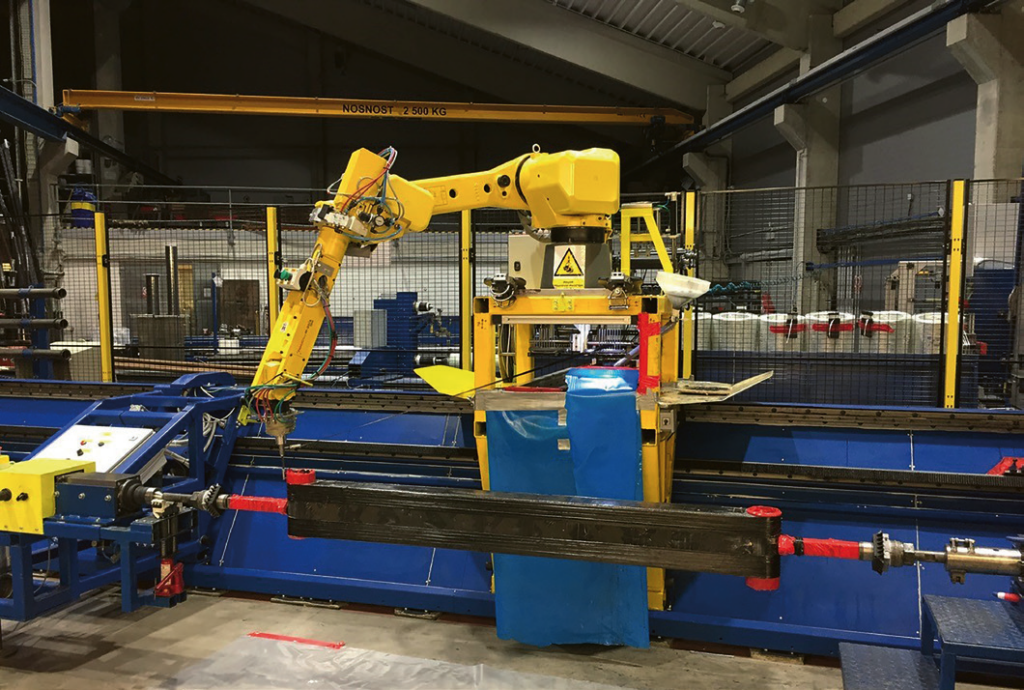Winding Machine Manufacturer: Innovating Advanced Winding Techniques for Industry Applications
The manufacturing sector continues to evolve with the introduction of innovative machinery that enhances productivity, precision, and efficiency. Among these innovations, winding machines stand out as crucial equipment in industries such as textiles, electronics, and cable production. These machines enable the process of wrapping materials like wires, fibres, and tapes in a systematic manner. This article delves into the role of winding machine manufacturers, the evolution of winding technology, and its diverse applications across industries.
The Evolution of Winding Technology
Winding machines have undergone significant advancements since their inception. Initially, manual winding techniques were prevalent, requiring considerable human effort and time. As industries grew and demand for mass production increased, manufacturers turned to automation. Modern winding machines manufacturers are now equipped with precision control systems, sensors, and software integrations, allowing for faster and more accurate winding processes.
The key advancements include:
- Automation and Robotics: Modern winding machines are fully automated, significantly reducing the need for manual intervention. This ensures consistent quality and improves production efficiency.
- Digital Control Systems: Manufacturers are increasingly using sophisticated digital systems that enable precise tension control, ensuring that the material is wound uniformly without overstressing or damaging it.
- Versatile Applications: Winding machines today are adaptable and can handle a wide range of materials and formats, from thin copper wires to large industrial tapes. This versatility has opened new avenues for manufacturers in various industries.
Industry-Specific Applications of Winding Machines
Winding machines are a cornerstone in several industries, where they serve specific purposes. Some of the prominent sectors utilizing winding machines include:
1. Electrical and Electronics Industry
In the electrical sector, winding machines are critical for producing transformers, electric motors, and other electrical components. These machines are responsible for winding copper wires around cores to create coils that are essential for electromagnetic functionality. Modern winding machines ensure precise wire placement, tension control, and insulation, improving the performance and reliability of electrical products.
2. Textile Industry
The textile industry also relies heavily on winding machines to wind yarns and fibers. In this sector, speed and precision are of the utmost importance, as inconsistent winding can lead to defects in the final fabric. Advanced winding machines are capable of handling various yarns, whether they be cotton, polyester, or synthetic blends, and can work at high speeds while maintaining uniform tension.
3. Cable and Wire Manufacturing
Cable and wire manufacturing is another area where winding machines play a vital role. Here, the machines are responsible for wrapping insulated wires in an organized manner for easy distribution and storage. In some cases, winding machines also wind metallic tapes and foils around the cables, providing shielding against electromagnetic interference. High-speed and precise winding capabilities are essential for producing quality cables that meet industry standards.
4. Medical Devices Industry
In the medical field, winding machines are employed to produce components like precision coils used in devices such as hearing aids, pacemakers, and other critical medical equipment. These machines require an extremely high degree of accuracy and control to ensure that the delicate wires used in medical devices are wound perfectly. Manufacturers in this industry depend on advanced winding machines to meet stringent regulatory standards and ensure patient safety.
Advanced Winding Techniques
With technological advancements, manufacturers have developed more sophisticated winding techniques to meet industry demands. Here are a few notable methods:
1. Multi-Spindle Winding
This technique involves using multiple spindles simultaneously, allowing for higher production speeds and improved efficiency. Multi-spindle winding is particularly advantageous in industries where bulk production is required, such as in textiles and cable manufacturing.
2. Tension Control Systems
Modern winding machines come equipped with tension control systems that maintain a consistent tension throughout the winding process. This feature is critical in industries like electronics and cable production, where variations in tension could lead to product defects or failure in performance.
3. Layer Winding
Layer winding ensures that each layer of material is wound in a precise, organized fashion, with each layer lying neatly on top of the previous one. This method is commonly used in the production of transformers and inductors, where proper coil arrangement is essential for functionality.
4. Automatic Winding
Automation is a game-changer in the winding industry. Automatic winding machines reduce the need for manual labor, minimize human errors, and enhance the production rate. These machines are equipped with sensors and AI algorithms that can detect defects and make real-time adjustments during the winding process.
The Future of Winding Machine Manufacturing
As industries continue to demand higher quality, speed, and efficiency, winding machine manufacturers are focusing on integrating cutting-edge technologies such as artificial intelligence (AI), Internet of Things (IoT), and machine learning (ML). These technologies will further enhance the automation capabilities of winding machines, allowing for real-time monitoring, predictive maintenance, and optimization of production lines.
1. Smart Winding Machines
Smart winding machines equipped with IoT sensors can transmit data in real time, enabling manufacturers to monitor machine performance remotely. This feature reduces downtime, as operators can detect and resolve issues before they affect production.
2. AI-Driven Optimization
AI-driven algorithms can analyze data collected from winding machines to optimize the winding process, improving efficiency and reducing waste. AI can also help in detecting defects in real-time, allowing manufacturers to maintain quality control.
Conclusion
The evolution of winding technology has revolutionized industries, making production processes faster, more efficient, and highly precise. Winding machine manufacturers are at the forefront of this revolution, developing state-of-the-art machinery that meets the needs of various industries, from electronics to textiles and medical devices. With continued advancements in automation and AI, the future of winding machines looks bright, with further improvements in speed, accuracy, and versatility on the horizon. As industries push towards higher productivity and quality standards, winding machine manufacturers will remain integral to these advancements, offering innovative solutions that meet evolving demands.
Stay in touch with us for more updates and alerts! Techtrand






